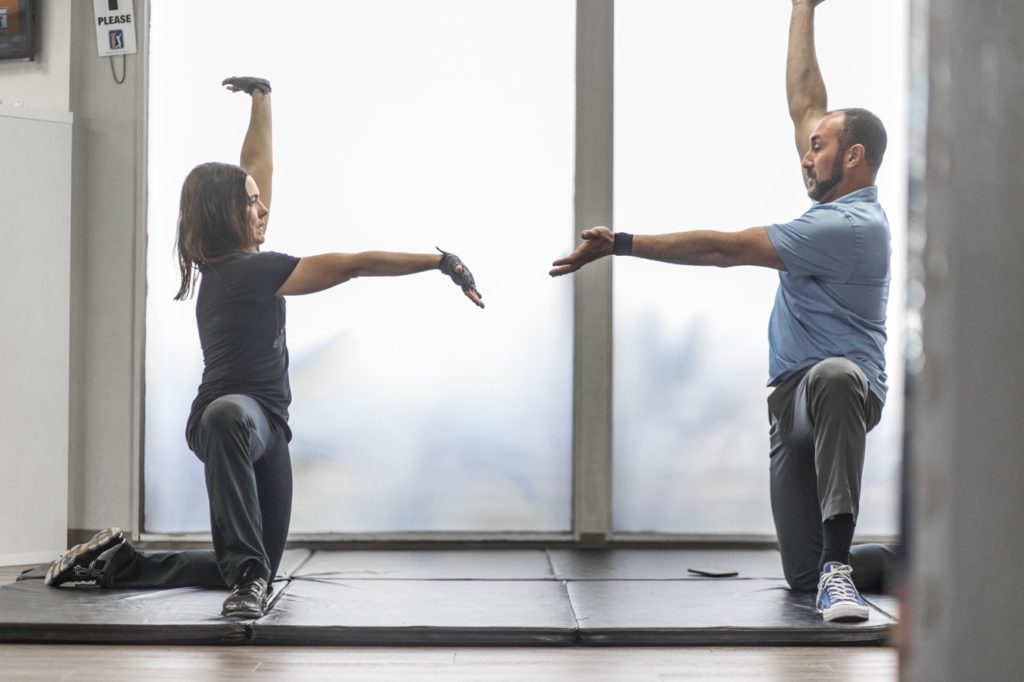We have been teaching the ELDOA™ postures at the studio since taking our first course with Dr Guy Voyer back in 2012 and while the way I utilize the ELDOA™ has changed a little bit over the years as I gain a better understanding of the exercises themselves and using them with our clients for improvement in ability to move, decrease pain and generally get stronger!
The ELDOA™ are postural exercises (LOADS) that you can do yourself after receiving personalized instruction, with the primary goal being to increase the space within a chosen articulation or joint. As the ELDOA exercises “create” space, the result is improved joint mechanics, increased blood flow, reduced pressure on the discs, a reduction of pain, spinal disc rehydration, better muscle tone, improved posture, and a sense of well being and awareness. . The human spine is a complicated and vital structure. The ELDOA are very precise postures that target a specific joint region to provide relief from pain and restore balance and were developed by French osteopath Guy VOYER DO.
The ELDOA (Etirements Longitudinaux avec Decoaptition Osteo-Articulaire) utilize myofascial stretching to put tension around a primary lesion making it the center of “separating forces.” The myofascial tension encourages a postural normalization in a specific joint resulting in numerous benefits. These exercises are both stretching and strengthening by their nature as we work at the end range throughout a fascial chain to gain the desired affects individual articulations
The English acronym is (Longitudinal Osteo-articular Decoaptation Stretches – the English acronym) are postural self-normalizing techniques, which aim at widening the space within a pair of joints. It is possible in one minute a day to relieve disc compression between L5-S1 or any vertebral segment or even more specifically at different parts of the sacro-illiac joint.
The Goals of the ELDOA™ are as follows:
• To create more space between the vertebrae.
• To create more space for the intervertebral disc.
• To depress the nerve between the vertebrae.
• To improve proprioception of the vertebral joint segment.
• To improve proprioception of the Function Spinal Unit (FSU).
• To hydrate the intervertebral disc.
• To move all the parts of the annulus fibrosis to stimulate the water intake.

